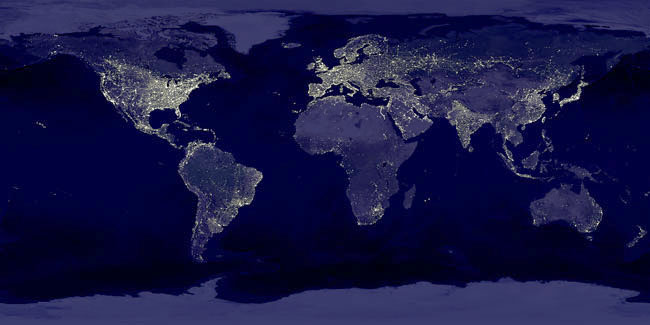 |
| Picture from: http://rangerjames.wordpress.com/2010/11/ |
Since the discovery of
fire, artificial light has become an essential tool for humanity.
Light is thought to have been used firstly by Neanderthals, some
72,000 years ago. They would have carried moss soaked in animal fat,
in naturally formed stone bowls or shells, which they could ignite.
It was most likely used for warding off predators at night
time.
More recently, as the second industrial revolution began in the late 19th century, the introduction of electricity to factories saw technological advancements in artificial lighting and the arrival of the incandescent lamp. With manufacturing costs being low this made lighting widely available.
Incandescence by definition is the emission of visible light by a body, caused by its high temperature and thus explains that the efficiency of this style of lighting is seriously poor: Most incandescent light bulbs only emit ~5% of their energy as light wasting 90% as heat energy. That is a lot of wasteful energy consumption right there.
It’s not the only inefficient part of these bulbs, either. Due to extended time at high temperatures, the lifetimes of these bulbs tend to be around 750 hours making for a lot of waste material in the long run. Sure, metal and glass can be recycled, but have you ever recycled a light bulb?
Light bulb efficiency may seem a little insignificant in the grand scheme of things, but let’s just take a look at the picture below. This shows the light pollution produced by humans at night time and as you can see, we use a lot of lights. Now imagine that each of these lights is wasting 90% of their energy. Even if each light bulb uses a small amount of energy, on a global scale this is a big problem. Wasted energy consumption means greenhouse gas emissions by energy production for absolutely no reason!
More recently, as the second industrial revolution began in the late 19th century, the introduction of electricity to factories saw technological advancements in artificial lighting and the arrival of the incandescent lamp. With manufacturing costs being low this made lighting widely available.
Incandescence by definition is the emission of visible light by a body, caused by its high temperature and thus explains that the efficiency of this style of lighting is seriously poor: Most incandescent light bulbs only emit ~5% of their energy as light wasting 90% as heat energy. That is a lot of wasteful energy consumption right there.
It’s not the only inefficient part of these bulbs, either. Due to extended time at high temperatures, the lifetimes of these bulbs tend to be around 750 hours making for a lot of waste material in the long run. Sure, metal and glass can be recycled, but have you ever recycled a light bulb?
Light bulb efficiency may seem a little insignificant in the grand scheme of things, but let’s just take a look at the picture below. This shows the light pollution produced by humans at night time and as you can see, we use a lot of lights. Now imagine that each of these lights is wasting 90% of their energy. Even if each light bulb uses a small amount of energy, on a global scale this is a big problem. Wasted energy consumption means greenhouse gas emissions by energy production for absolutely no reason!
 |
| Picture from: http://apod.nasa.gov/apod/ap001127.html |
The good news is this
problem is being tackled. Incandescent lights are now being phased
out with many government bodies taking them off the shelves. In 2008,
the European Union decided to stop the use of incandescent lights, aiming to completely phase them
out by 2012 and save a total of 15 million tonnes of CO2 every year.
The main alternative these days are LEDs. Their luminous efficacy is often double that of incandescent light bulbs making them twice as efficient. They also last up to 50,000 hours making them an obvious choice over other lighting.
The initial cost of LED lights is a little higher, but it is well worth the investment with all the energy and material that will be saved. This company can cater for all your LED needs so make this small change and lead a greener lifestyle!
The main alternative these days are LEDs. Their luminous efficacy is often double that of incandescent light bulbs making them twice as efficient. They also last up to 50,000 hours making them an obvious choice over other lighting.
The initial cost of LED lights is a little higher, but it is well worth the investment with all the energy and material that will be saved. This company can cater for all your LED needs so make this small change and lead a greener lifestyle!
No comments:
Post a Comment